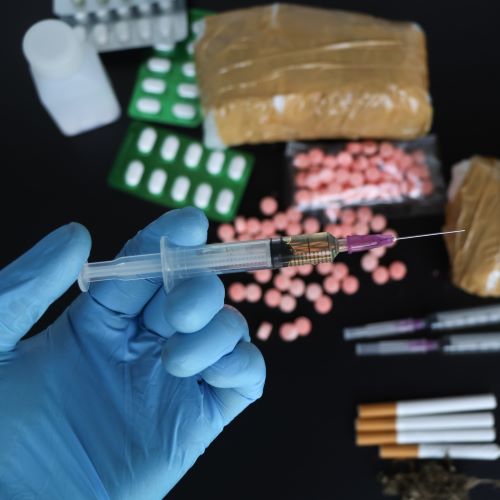28 April 2025
 University of South Australia scientists have developed a highly sensitive method to detect illegal opioids and a veterinary sedative in Australia’s wastewater system, providing a vital early warning tool to public health authorities.
University of South Australia scientists have developed a highly sensitive method to detect illegal opioids and a veterinary sedative in Australia’s wastewater system, providing a vital early warning tool to public health authorities.
A new study published in Environmental Science and Pollution Research, funded by the Australian Criminal Intelligence Commission and Preventative Health SA, explains the innovative wastewater-based testing method capable of identifying trace levels of nitazenes – a class of highly potent synthetic opioids – and xylazine, an animal sedative not approved for human use.
Nitazenes are among the most dangerous opioids ever synthesised, up to 1000 times more potent than morphine. Initially developed in the 1950s but never approved for clinical use, these substances have recently emerged in the illicit drug supply worldwide. Their extreme potency poses a significant risk of overdose, often with fatal consequences.
Xylazine, commonly used in veterinary medicine, is often added to illicit opioids such as fentanyl and heroin. It complicates overdose treatment because its effects cannot be reversed with naloxone, the standard emergency antidote for opioid toxicity. Moreover, xylazine use is associated with severe health impacts including sedation, respiratory depression, hypotension, and dangerous skin ulcerations.
“This is the first time a comprehensive suite of nitazene compounds and xylazine has been monitored in Australian wastewater,” says lead researcher UniSA Associate Professor Cobus Gerber.
“Our method can detect even minute levels, allowing us to track emerging threats before they escalate,” he says.
Over a three-day period in August 2024, researchers analysed 180 wastewater samples from 60 sites around Australia. They identified five different nitazenes in 3–6% of all samples. Alarmingly, xylazine was detected in 26% of all samples.
“Given the potency of nitazenes and the health complications associated with xylazine, even low-level detections are a red flag,” says co-first author Dr Emma Keller.
The research team developed a laboratory method using solid phase extraction and liquid chromatography–mass spectrometry (LC-MS/MS) to concentrate and identify target compounds. The method achieved up to 1000-fold enrichment, with limits of detection well below 1 ng/L for most substances.
Crucially, the method is adaptable and can be quickly updated to detect new derivatives as they emerge – an essential capability as drug manufacturers continue to tweak chemical structures to evade legislation.
“This analytical platform enhances Australia’s capacity to monitor and respond to the shifting landscape of illicit drug use,” says Assoc Prof Gerber. “It complements forensic analysis and can provide near real-time data to inform public health strategies.”
The results underscore the growing presence of harmful and often unsuspected substances in street-level drugs. In the United States, xylazine has already been detected in over 80% of fentanyl-containing paraphernalia and is implicated in an increasing number of overdose deaths.
“With similar patterns now being detected in Australia and nitazenes also infiltrating the stimulant market, there’s an urgent need to raise awareness and strengthen harm reduction responses,” Assoc Prof Gerber says.
“Comprehensive method to detect nitazene analogues and xylazine in wastewater” is authored by Emma L. Keller, Brock Peake, Bradley S. Simpson, Jason M. White and Cobus Gerber.
DOI: 10.1007/s11356-025-36425-0
…………………………………………………………………………………………………………………………
Contact for interview:
Researcher contact: Associate Professor Cobus Gerber E: cobus.gerber@unisa.edu.au
Media contact: Candy Gibson M: +61 434 605 142 E: candy.gibson@unisa.edu.au



